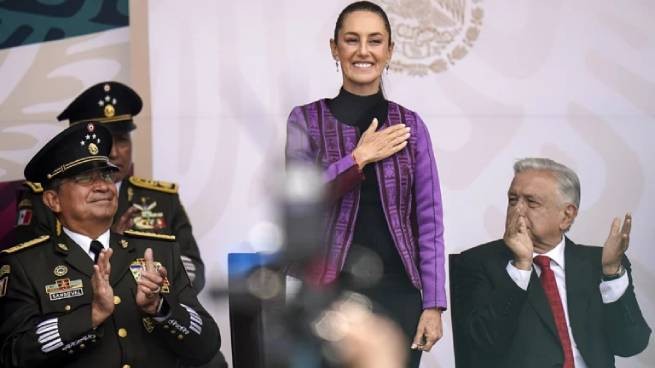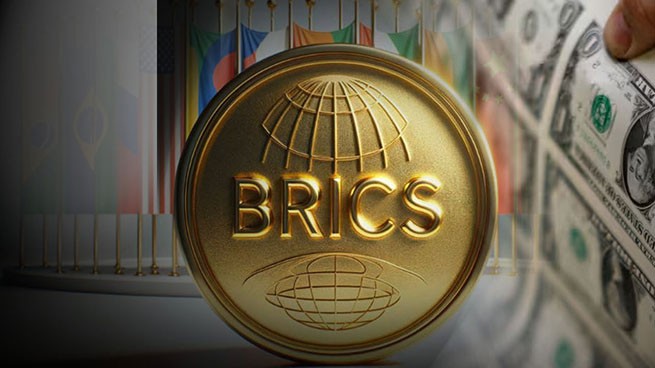At the BRICS+ summit in Kazan in October 2024, the BRICS+ member countries will decide on de-dollarization trade among themselves, once and for all eliminating the main advantage of the American currency and laying the foundation for the creation of their own common currency in the future.
As reported by Hindu Business Line, the October summit will confirm the voluntary right BRICS++ members to deregulate trade between themselves. The official (who spoke on condition of anonymity) also told the publication about the new common currency, which will initially be fictitious (not in physical form), and its value will be determined based on a basket of currencies.
It is worth noting that this is how it all started creation of the euro. In the beginning It was a “fictitious” currency called the European Currency Unit (ELM or ECU).
“India is considering an appropriate response based on the economic and diplomatic benefits it can derive from these proposals without increasing its vulnerability to China,” the publication notes. Even if India decides not to make a deal with China because of the current rivalry between them (Russia is working hard behind the scenes to finally resolve the problems between the world's two most populous countries), it will still be able to trade with other countries without the dollar.
Russia could send the excess rupees it has accumulated in its accounts in India, convert them into Brazilian reals to pay Brazil for some deal. Or convert them into South African rands to pay South Africa.
«India is the world's fifth-largest economy and could become the third-largest by the end of the decade. She therefore expects the rupee to play a more significant role in global trade. (…). India wants genuine financial multipolarity, not financial bipolarity, but it also understands that the yuan will actually accelerate its internationalization thanks to BRICS+ deglobalization efforts. (….) The same applies to the BRICS+ currency plans, as there is no doubt that the yuan will become the dominant currency in any such basket. Given that the internationalization of the yuan is inevitable, India may conclude that it is better for the rupee to be internationalized along with the yuan through the BRICS+ currency basket than to not benefit from the proposal at all.“, writes the Indian newspaper.
On Sunday 25/08, former Russian Prime Minister Sergei Stepashin stated that “It is too early to talk about a single BRICS+ currency.” “At the moment, it is advisable to increase settlements in national currencies within the framework of bilateral trade,” he told TASS. “It's hard to imagine India and China having a common currency. They are very large countries, large economies. The first step we must take is to make payments in national currencies. It is necessary toensure the smooth functioning of the Eurasian Bank and the BRICS+ bank, and conduct operations there”– he noted.
It is worth noting that the European Unit of Account (EUE or ECU) was the unit of account of the European Communities from 1979 to 1998 (EU), later the European Union (EU), and the predecessor of the euro. The fictitious currency lasted 19 years before taking physical form. Something similar will happen with the BRICS+ currency, perhaps not for as long, but it will certainly take time.
On 1 January 1999, the EMU was replaced by the euro at a ratio of 1:1. The value of the European currency unit was determined by a so-called basket of currencies and was calculated using an exact sum of the national currencies of the EU member states. The weight of each currency in the basket was based on various macroeconomic criteria, such as the country's share of the gross national product of the European Community, the share of each state in the EU's internal trade, and the importance of the national currency as a reserve currency.
This weight is reviewed every five years and adjusted if necessary. The amount of currencies in the basket was equal to the previously existing European Unit of Account (EUE), which in turn had been set at a fixed rate against the dollar in the early 1970s. The exchange rate of the EUM against another currency was determined from the exchange rate of the sum of the currencies in the basket multiplied by the amount of each currency in the basket.
There were no ECU banknotes, only commemorative coins of special issues. However, some member states issued government bonds and bills of exchange in ECU, which were traded on stock exchanges and could be purchased by private individuals. It was also possible to open bank accounts and make transfers in ECU for private individuals, but not every commercial bank offered these products to its customers. Travellers' cheques in ECU were also sold.
Thus, everything that was done for the ECU will also be done for the BRICS++ common currency, since the know-how exists.







More Stories
Russian President Will Not Fly to Mexico for Claudia Sheinbaum's Inauguration
Naples: Children knock statue off balcony, kill tourist passing below
De-dollarization: how the East and West assess the process of moving away from the dollar